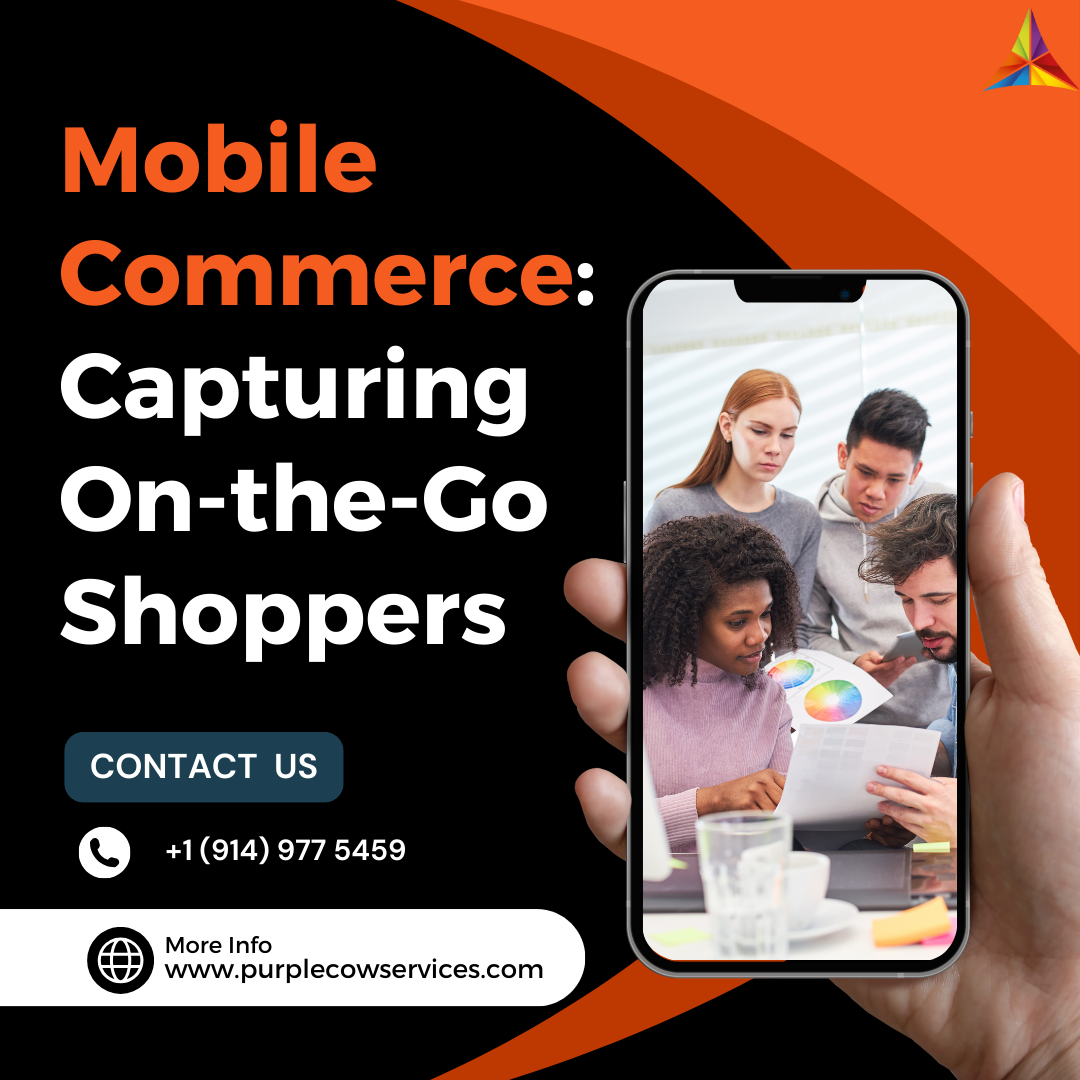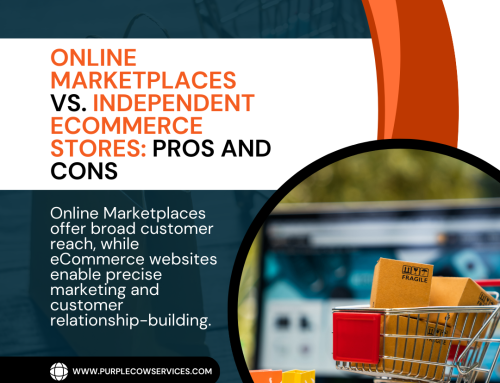In the last decade, the way we shop has undergone a massive transformation, thanks to mobile commerce.
Share This Story, Choose Your Platform!
Gone are the days of being tethered to desktop computers or visiting brick-and-mortar stores. Today, consumers have the world of shopping in the palm of their hands, and businesses are adapting to this new landscape.
The Rise of Mobile Commerce
Mobile commerce, often referred to as m-commerce, is the practice of buying and selling goods and services through mobile devices like smartphones and tablets. It has gained tremendous momentum due to its convenience and accessibility. With the rise of mobile apps and mobile-friendly websites, consumers can shop from anywhere at any time, making it a game-changer in the retail industry.
This shift toward mobile commerce was accelerated by the rapid adoption of smartphones. These devices have become an integral part of our daily lives, and people use them not just for communication but also for various online activities, including shopping. As a result, businesses have had to rethink their marketing and sales strategies to meet the demands of the mobile-savvy consumer.
The Benefits of Mobile Commerce
One of the primary benefits of mobile commerce is convenience. Shoppers no longer need to plan trips to physical stores; they can shop while waiting for a friend, during a lunch break, or even while commuting. This convenience factor has led to a significant increase in impulse purchases and spontaneous buying decisions.
Mobile commerce has made shopping a seamless part of our daily routines. Whether you’re on a train, at a coffee shop, or lounging at home, your favorite products are just a few taps away. This accessibility has blurred the lines between leisure time and shopping time, and businesses have capitalized on this trend.
Additionally, mobile commerce provides a bridge between the online and offline shopping experiences. With features like geolocation and in-store pickup options, customers can combine the convenience of mobile shopping with the immediacy of in-store purchases. This synergy offers a versatile and adaptable shopping experience that caters to various consumer preferences.
The Mobile Shopping Experience
User experience is crucial in mobile commerce. Responsive design, easy navigation, and fast loading times are essential to keep users engaged. Additionally, integrating features like mobile wallets and one-click checkout options can streamline the purchase process, reducing cart abandonment rates.
The mobile shopping experience extends beyond just making transactions. It encompasses the entire customer journey, from product discovery to post-purchase support. Mobile apps and websites must offer intuitive interfaces that guide users seamlessly from browsing to checkout. A well-designed mobile commerce platform ensures that customers can find what they need quickly, view product details easily, and complete transactions with minimal friction.
Moreover, personalization plays a significant role in enhancing the mobile shopping experience. Mobile commerce platforms can leverage customer data and behavior to provide tailored recommendations, product suggestions, and personalized promotions. These efforts create a more engaging and enjoyable shopping journey, increasing customer satisfaction and loyalty.
Mobile commerce is not just about making transactions; it’s about crafting a shopping experience that resonates with consumers and keeps them coming back for more. Businesses that prioritize user experience in their mobile commerce strategy are more likely to succeed in capturing on-the-go shoppers.
Mobile Commerce and Social Media
The integration of social media platforms and mobile commerce has created a powerful combination. Users can discover products through social media ads, influencer recommendations, and shoppable posts. This seamless integration allows shoppers to make purchases directly through social media platforms, eliminating the need to switch between apps or websites.
Social commerce leverages the vast user bases of platforms like Facebook, Instagram, and Pinterest to connect brands with potential customers. Users can explore products, read reviews, and make purchases without leaving their favorite social media apps. This convergence of social interaction and shopping convenience has reshaped the way businesses approach e-commerce.
Businesses now recognize the importance of maintaining an active and engaging presence on social media. They use social platforms not only to showcase products but also to build communities, share user-generated content, and respond to customer inquiries. Social commerce has turned these platforms into vibrant marketplaces where brands can directly interact with their audience and drive sales.
In summary, the fusion of social media and mobile commerce has created a dynamic and interactive shopping ecosystem. Brands that harness the power of social commerce effectively can tap into the vast potential of on-the-go shoppers who seek convenience, inspiration, and seamless purchasing experiences.
Mobile Commerce Security
Security is a top concern in mobile commerce. Businesses must implement robust security measures to protect sensitive customer data. SSL certificates, encryption, and secure payment gateways are some of the essential elements to establish trust and safeguard user information.
Mobile commerce transactions involve the exchange of personal and financial data, making them attractive targets for cybercriminals. Customers expect their information to be handled with the utmost care and security. Any breach of trust can lead to reputational damage and legal consequences for businesses.
To ensure the security of mobile commerce, businesses should prioritize the following aspects:
Secure Payment Processing: Mobile commerce platforms must employ secure payment gateways that encrypt payment information and protect it from interception.
Data Encryption: Sensitive customer data, including payment details and personal information, should be encrypted to prevent unauthorized access.
Regular Security Audits: Periodic security audits and vulnerability assessments can identify potential weaknesses in a mobile commerce system, allowing for timely fixes.
User Authentication: Implement multi-factor authentication to verify the identity of users, especially during sensitive transactions.
Privacy Policies: Clear and transparent privacy policies should be communicated to customers, outlining how their data will be used and protected.
Regular Updates: Mobile commerce apps and websites should be kept up to date with the latest security patches and improvements.
User Education: Customers should be educated about safe mobile commerce practices, such as using secure Wi-Fi networks and avoiding public computers for transactions.
In conclusion, mobile commerce security is non-negotiable. Businesses that invest in robust security measures not only protect their customers but also build trust and credibility. A secure mobile commerce environment is essential for sustained growth and success in the digital marketplace.
Mobile Commerce Trends
Mobile commerce is continuously evolving. Stay ahead of the curve by exploring the latest trends, such as augmented reality (AR) shopping experiences, voice commerce, and progressive web apps (PWAs). Understanding these trends can give your business a competitive edge.
Augmented Reality (AR) Shopping
Augmented reality is transforming the way consumers shop by offering immersive experiences. AR apps allow customers to visualize products in their real-world environment before making a purchase. For example, customers can see how furniture would look in their living room or try on virtual clothing.
This trend enhances the online shopping experience by reducing uncertainty and increasing confidence in product choices. Businesses that integrate AR into their mobile commerce apps provide an engaging and interactive way for customers to explore their offerings.
Voice Commerce
Voice commerce, powered by virtual assistants like Amazon’s Alexa and Apple’s Siri, is gaining traction. Customers can use voice commands to search for products, add items to their carts, and complete purchases. Voice commerce offers a hands-free and convenient shopping experience.
To capitalize on this trend, businesses should optimize their mobile commerce platforms for voice search. This includes creating voice-friendly product listings and ensuring compatibility with voice-activated devices.
Progressive Web Apps (PWAs)
Progressive web apps are hybrid websites that offer the speed and functionality of native apps while remaining accessible through web browsers. PWAs provide seamless experiences with fast load times, offline functionality, and push notifications.
PWAs are becoming a popular choice for mobile commerce because they eliminate the need for users to download and install separate apps. This trend simplifies the shopping process and encourages users to engage with brands directly through their web browsers.
Social Commerce Integration
Social commerce continues to evolve with more platforms offering in-app shopping features. Instagram’s “Checkout” and Facebook’s “Shops” are examples of how social media giants are integrating e-commerce directly into their platforms.
Businesses should explore these features to reach consumers where they spend a significant portion of their online time. Social commerce integration allows for seamless shopping experiences without the need to navigate away from social media apps.
Personalized Shopping Experiences
Personalization is not a new trend, but it remains essential in mobile commerce. Customers expect tailored recommendations and content that align with their preferences and previous interactions with a brand. Leveraging data analytics and machine learning, businesses can deliver personalized shopping experiences that increase engagement and conversion rates.
In conclusion, staying informed about mobile commerce trends is crucial for businesses seeking to remain competitive in this rapidly evolving landscape. Embracing innovative technologies and adapting to changing consumer behaviors can position your brand for long-term success in mobile commerce.
The Future of Mobile Commerce
The future of mobile commerce promises even more exciting developments. With the advancement of technologies like 5G, the Internet of Things (IoT), and mobile payment innovations, the mobile shopping experience is set to become more immersive, efficient, and personalized.
5G Connectivity
The rollout of 5G networks will revolutionize mobile commerce by delivering faster and more reliable connections. This enhanced speed and bandwidth will enable richer media experiences, smoother video streaming, and quicker loading times for mobile commerce platforms.
5G will also open the door to augmented reality (AR) and virtual reality (VR) shopping experiences that were previously limited by network constraints. Businesses that leverage 5G capabilities can offer customers immersive and interactive shopping journeys.
Internet of Things (IoT) Integration
The Internet of Things (IoT) will play a significant role in the future of mobile commerce. IoT devices, such as smart appliances, wearables, and connected vehicles, will create new opportunities for shopping.
For example, a smart refrigerator could automatically reorder groceries when supplies run low, or wearable devices could provide personalized shopping recommendations based on the user’s location and preferences. Mobile commerce platforms that integrate seamlessly with IoT ecosystems will be poised for success.
Mobile Payment Innovations
The evolution of mobile payments will continue, with innovations like digital wallets, contactless payments, and cryptocurrency gaining popularity. Mobile wallets like Apple Pay and Google Pay have already changed the way consumers make in-store and online purchases.
As mobile payment options diversify, businesses should stay flexible and offer a variety of payment methods to cater to customer preferences. Additionally, ensuring the security of these payment methods will be paramount in maintaining trust among users.
Enhanced Personalization
The future of mobile commerce will take personalization to new heights. Advanced AI algorithms will analyze vast amounts of customer data to offer hyper-personalized product recommendations, content, and shopping experiences.
Imagine a mobile commerce platform that knows your style, preferences, and even your current mood, and tailors product suggestions accordingly. This level of personalization will not only drive sales but also create stronger emotional connections between consumers and brands.
Sustainable and Ethical Commerce
Consumers are becoming increasingly conscious of sustainability and ethical practices. Mobile commerce of the future will likely see a surge in eco-friendly and socially responsible shopping options.
Businesses that adopt sustainable practices and transparent ethical standards will appeal to a growing segment of environmentally and socially conscious shoppers. Communicating these initiatives effectively through mobile commerce platforms will be key to capturing this market.
Conclusion
The future of mobile commerce holds immense promise and potential. Businesses that embrace emerging technologies and consumer trends will thrive in this dynamic landscape, offering customers increasingly convenient, personalized, and innovative shopping experiences.
At Purple Cow, we’re your mobile commerce trailblazers. We specialize in crafting seamless, personalized, and secure mobile shopping experiences. With the rise of on-the-go shoppers, our strategies keep you ahead of the curve. From responsive design to the latest trends, we’re your partners in mobile commerce success. Join us in shaping the future of retail – one mobile tap at a time!

















